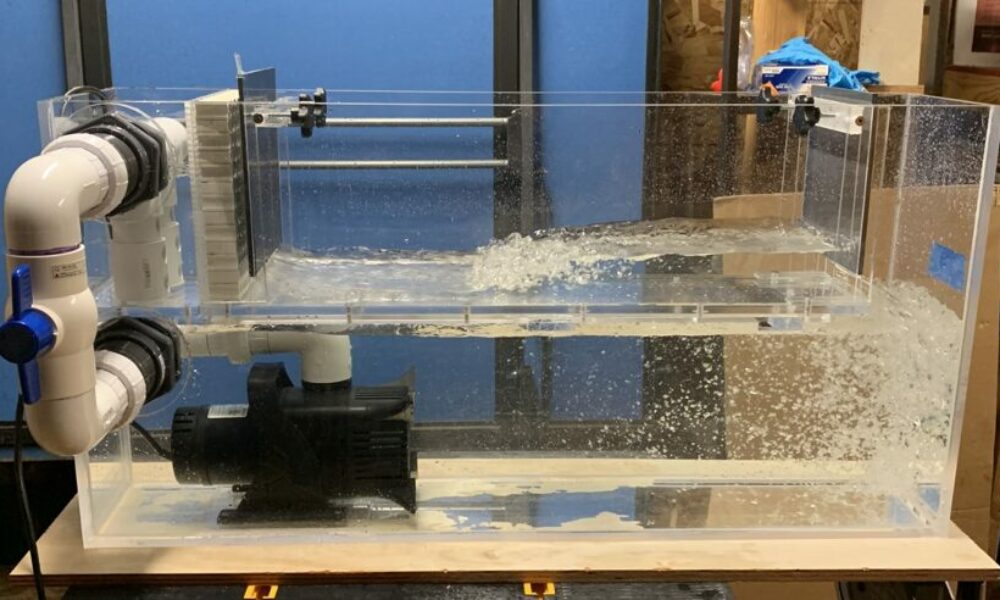
Virtual Flume
Ven Te Chow’s book “Open Channel Hydraulics” is arguably the gold-standard book for hydraulic engineers-especially those of us who model open channel flow.

Full Momentum Episode 1: HEC-RAS Pub & Grub Recap. What’s coming in Version 5.1. 1D Finite Volume Solver, Spatially Varied Precipitation, 2D Pump Stations, geometry pre-processing improvements in RAS Mapper, 1D vs. 2D Modeling, 3D Viewer in RAS Mapper, Non-Newtonian Fluids, Up-coming on-line HEC-RAS class, and more!
Full Momentum Episode 2: Sports, Shustar Ancient Hydraulic Engineering Site, Graphical Cross Section Editor, Geometry Measuring Tool.
Full Momentum Episode 3: Krey Price joins this episode. We talk about Rain on Grid modeling, pontoon bridge modeling in HEC-RAS, and some cool “hacks” for HEC-RAS modelers.
Comments
BAYEJJA Mohamed
on May 11, 2020Hi,
thank you for your effort, you are doing such amazing thing and useful for us,
I wonder if you can talk about HEC RAS Sediment, especially Boundary condition?
thank you
Chris Goodell
on May 11, 2020Great idea Bayejja. I will put it on the list of topics for future vodcasts.
Biniam
on May 12, 2020Good job, keep it up!!
Sherman
on June 4, 2020The engineering firm where I work, in the Pittsburgh area, does a lot of projects involving bridge and culvert crossings, both new crossings and structure replacements. We use HEC-RAS for nearly all of these projects unless a much simpler application like HY-8 can be used to size a culvert. The Pennsylvania DOT has indicated that it is looking at moving toward 2D modeling for more kinds of hydraulic modeling situations than it does currently (what the DOT calls “Complex” hydraulic modeling projects). I have not heard anything about the HEC-RAS development team adding explicit Bridge Modeling capabilities to the software’s 2D module. Do you know anything about this?
Chris Goodell
on June 4, 2020Hi Sherman. Yes, HEC will be including explicit bridge modeling capabilities for 2D areas in the next release of HEC-RAS. This will be Version 5.1. It is expected out as a beta release sometime this summer.
Sherman
on June 4, 2020That is great to hear! Thanks Chris.
Sherman
Daniel
on June 23, 2020As an engineer (in-training) that works on quite a few dam breach studies, most of them for tailings and mine waste dams, the addition of mudflow/debris flow capability is a massive step! looking forward to the beta!
Michael C.
on December 1, 2020Chris, I’m wondering if HEC-RAS 2D is the right tool to perform an analysis of a channel near the coast, under coastal flooding conditions. I imagine that I would need to set up the model to include a costal stage boundary condition along the coast (which could be a pretty long BC), along with water surface elevation boundary conditions for the actual channel. Does it seem like HEC-RAS 2D is an appropriate tool or should I be researching other modeling software? Thanks!
Chris Goodell
on December 4, 2020Hi Michael. Just keep in mind what RAS won’t do for you. It won’t simulate vertical variations in velocity, everything is depth averaged for a given cell/cell face. There is no way to simulate saline water nor especially a salt water freshwater “wedge”. But otherwise, provided you use the full momentum equation set and try to get your Theta implicit weighting factor down towards 0.6, RAS can perform very well in a tidal environment.
Add Your Comment